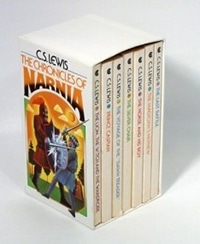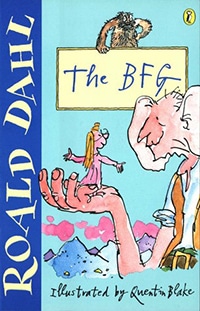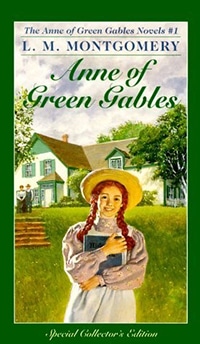 Henry, Jessie, Violet and Benny in Gertrude C. Warner’s The Boxcar Children. The lead in every Noel Streatfield shoe book. Mary Lennox from The Secret Garden by Frances Hodgson Burnett. Pippi Longstocking throughout the Astrid Lindgren novels. Pollyanna in the Eleanor H. Porter classic of the same name. Pip in Charles Dickens’ Great Expectations. All orphans.
Henry, Jessie, Violet and Benny in Gertrude C. Warner’s The Boxcar Children. The lead in every Noel Streatfield shoe book. Mary Lennox from The Secret Garden by Frances Hodgson Burnett. Pippi Longstocking throughout the Astrid Lindgren novels. Pollyanna in the Eleanor H. Porter classic of the same name. Pip in Charles Dickens’ Great Expectations. All orphans.
The use of orphans in children’s stories is common, and it extends into other mediums as well. Bambi, Simba, Cinderella, Snow White, Elsa and Anna, Maui, Lilo and Kit Cloudkicker are all familiar orphans from Disney movies.
In addition to parentless children, these stories have another thing in common – their characters are often displaying a growth mindset. It’s that approach that helps the character transform from victim to hero, from a person with a problem to a person solving a problem. With that in mind, what can we learn from characters like Edmund Pevensie, Sophie and the BFG and Anne Shirley?
Learning from your mistakes
 In The Lion, the Witch and the Wardrobe, Edmund Pevensie first mocks his sister Lucy’s discovery of a new world with talking animals, but later explores the land on his own and befriends its evil resident Queen Jadis, otherwise known as the White Witch. He repeatedly betrays characters, ultimately playing a key role in the death of the hero lion Aslan. As the series goes on, though, Edmund is redeemed and it is in that redemption that he displays a growth mindset. Following a dramatic intervention from Aslan and forgiveness from Lucy, Edmund changes radically. He learns from his mistakes and becomes a valuable part of the story in terms of good conquering evil. When he is crowned King of Narnia along with his siblings, he becomes known as King Edmund the Just, “a graver and quieter man than Peter, and great in council and judgment.”
In The Lion, the Witch and the Wardrobe, Edmund Pevensie first mocks his sister Lucy’s discovery of a new world with talking animals, but later explores the land on his own and befriends its evil resident Queen Jadis, otherwise known as the White Witch. He repeatedly betrays characters, ultimately playing a key role in the death of the hero lion Aslan. As the series goes on, though, Edmund is redeemed and it is in that redemption that he displays a growth mindset. Following a dramatic intervention from Aslan and forgiveness from Lucy, Edmund changes radically. He learns from his mistakes and becomes a valuable part of the story in terms of good conquering evil. When he is crowned King of Narnia along with his siblings, he becomes known as King Edmund the Just, “a graver and quieter man than Peter, and great in council and judgment.”
Adapting beliefs based on new facts and experiences
 At the beginning of Roald Dahl’s the BFG, Sophie knows it is dangerous to peer outside each night while everyone is asleep. When the giant BFG captures her, she screams once than then behaves quite bravely. She challenges the what he does, and he challenges her right back about the behavior of humans.
At the beginning of Roald Dahl’s the BFG, Sophie knows it is dangerous to peer outside each night while everyone is asleep. When the giant BFG captures her, she screams once than then behaves quite bravely. She challenges the what he does, and he challenges her right back about the behavior of humans.
“Giants isn’t eating each other either, the BFG said. Nor is giants killing each other. Giants is not very lovely, but they is not killing each other. Nor is crockadowndillies killing other crockadowndillies. Nor is pussy-cats killing pussy-cats.”
“They kill mice,” Sophie said.
“Ah, but they is not killing their own kind,” the BFG said. ‘Human beans is the only animals that is killing their own kind.”
“Don’t poisonous snakes kill each other?” Sophie asked. She was searching desperately for another creature that behaved as badly as the human.
“I is not understanding human beans at all,” the BFG said. “You is a human bean and you is saying it is grizzling and horrigust for giants to be eating human beans. Right or left?”
“Right,” Sophie said
“But human beans is squishing each other all the time,” the BFG said. “They is shootling guns and going up in aerioplanes to drop their bombs on each other’s heads every week. Human beans is always killing other human beans.”
He was right. Of course he was right and Sophie knew it. She was beginning to wonder whether humans were actually any better than giants.
It is through the conversations Sophie and the BFG have that they are both able to evolve their perspectives about the other. As they learn new facts, they evolve their beliefs. Without those mindset shifts, the story’s plot couldn’t happen!
Setbacks can be used as a wake-up call to work harder next time
 The perpetually optimistic Ann Shirley in Anne of Green Gables has had her share of setback, varying from struggling to find a forever home to trying to fit in to having red hair, not listed in order of importance as she would designate. When Anne is placed by the orphanage with Matthew and Marilla Cutherbert, her enthusiasm for life is tested numerous times. When adults make fun of her red hair, her biggest source of shame, she initially reacts by screaming but later finds peace with the perpetrator. When she tries to learn ladylike skills like cooking and cleaning, she mixes up ingredients and is easily distracted, resulting in comical disasters and second attempts. With each failure, she has a choice: give up or try harder the next time. In every instance, Anne tries harder the second time around. It is for her curiosity, grit and willingness to keep trying that Anne Shirley has become a beloved character.
The perpetually optimistic Ann Shirley in Anne of Green Gables has had her share of setback, varying from struggling to find a forever home to trying to fit in to having red hair, not listed in order of importance as she would designate. When Anne is placed by the orphanage with Matthew and Marilla Cutherbert, her enthusiasm for life is tested numerous times. When adults make fun of her red hair, her biggest source of shame, she initially reacts by screaming but later finds peace with the perpetrator. When she tries to learn ladylike skills like cooking and cleaning, she mixes up ingredients and is easily distracted, resulting in comical disasters and second attempts. With each failure, she has a choice: give up or try harder the next time. In every instance, Anne tries harder the second time around. It is for her curiosity, grit and willingness to keep trying that Anne Shirley has become a beloved character.
Growth mindset: readers reflection guide
Although an archetype in children’s literature, fictional orphans are not the only ones displaying a growth mindset. Work with your students to identify characteristics of a growth mindset in the books they read. Here are some guiding questions to help:
- What was a hurdle the character in your book had to overcome?
- What was the character’s initial reaction to the challenge and how did their approach change as the story developed?
- When was a time this story that the character(s) learned from mistakes? Learned a new skill to be able to tackle a problem?
- Were the characters in your book able to address an obstacle on the first try? If it took multiple attempts, how did they change their approach over the course of the story?
- As the character in your story learns new facts, what do they do with the information? How do they apply it to their own belief system or to face their challenge?
- Have you experienced challenged in your own life that are similar to what the character faced? What problem-solving skills that were used in this book do you think you could apply in your own life?
Looking for modern day alternatives you can try? Here are some children’s books worth checking out:
- Boy 21 by Matthew Quick
- The Sweetness at the Bottom of the Pie (Flavia de Luce #1) by Alan Bradley
- When Mischief Came to Town by Katrina Nannestad
Looking at characters in novels through the lens of a growth mindset isn’t only for kids. While all of the books mentioned here are good for all ages, including kids, here are some stories targeted specifically for adult readers:
- Eleanor Oliphant is Completely Fine by Gail Honeyman
- The Storied Life of A.J. Fikry by Gabrielle Zevin
- The Bookshop on the Corner by Jenny Colgan
Note: While I personally like every book I’ve included here, their inclusion is not an endorsement from KnowledgeWorks. When recommending books to the children’s in your life, be sure to review them for content and age appropriateness first.


